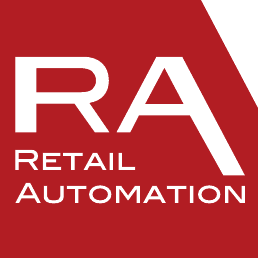From Vending Times: MEI's Chuck Reed discusses Bill Recycling and how Cashless (read NFC and Google Wallet) interact.
Americans take their freedom seriously -- especially their freedom to choose. Think of the mind-numbing number of choices Americans make each day, from coffee (decaf, hazelnut, cinnamon, French roast, latte, Starbucks, Dunkin' Donuts, Maxwell House?) to cars (hybrid, SUV, battery-powered, luxury, pickup truck, sedan, Ford, Lexus, BMW?). Consumers today, especially Generation Y, have come to expect choices in nearly every area of their lives ... even methods of payment.
Consumers have more ways to pay today than ever before: cash, credit, debit, key fob and now mobile payments like Google Wallet. Payment trends from the Federal Reserve Bank of Boston show that all of these forms of payments are used, and that cash is still being used, too. Most convenience stores, drugstores, gas stations and quick-serve restaurants now accept all these forms of payment, giving consumers many easy options for buying snacks and beverages to satisfy their every craving.

Your customers expect the freedom to pay as they like. As a vending operator, if you don't accept their payment of choice, they'll just give up on your vending machines in favor of the retailer around the corner. Luckily, today's latest payment technologies -- cash recycling and cashless -- provide total payment choice at the vending machine, eliminating the need for customers to look elsewhere.
ACCEPT MONEY, ANY WHICH WAY
Cash-recycling technology gives vending machine customers the choice to pay with the large bills, like $20s, that are most commonly in their wallets. Cashless technology has also become more affordable and widely deployed. Both of these payment technologies have a proven ROI, yet operators are still slow to pull the trigger. Possibly they are confused about which technology to deploy.
In a podcast recorded earlier this year, Buffalo Rock Vending Co. general manager Mike Bunt was asked if operators were hesitant to invest in cash-recycling technology because they anticipated heavy investment in cashless technology, which might therefore render cash recycling unnecessary. Bunt, who has invested in both throughout the Southeast, replied simply, "Operators need to do both."
Bunt continued, "Most of our machines accept cash and cards. They use a cash recycler to make paying with cash more convenient, and are ready for mobile payment technologies when they become mainstream. It doesn't make sense to not equip your machines to accept as much money as you can."
Most consumers carry at least one credit card and large-denomination bills like $20s, which are most commonly dispensed by automated teller machines. In fact, 31% of all paper currency in circulation today is the $20 bill, according to the Federal Reserve. On the other side, only 50% of consumers or less carry $3 in coins or bills -- the only payments accepted by most vending machines today. Clearly these machines are missing 50% of their potential sales, which isn't something operators can afford in this economy.
Many patrons leave those machines frustrated and without the refreshments they craved. They may even give up on the vending machine permanently, switching to fast-food restaurants and c-stores that will take their cards or $20 bills.
And machines equipped with recyclers and credit card readers can provide greater product variety because they are not constrained to low-cost items. Higher-priced products such as healthy sandwiches and fruit are salable, and consumers can easily purchase more than one item per transaction. So, not only is it possible to deploy note recycling and cashless acceptance in one device: it may well be advisable.
The adoption curve of cash recycling technology has turned up dramatically in the past year. MEI, my company, has sold more than 20,000 cash recyclers to vending machine operators since October 2008. All operators who have deployed the technology have reported sales lifts, new profit opportunities, increased customer satisfaction and cost savings.
What is cash-recycling technology? The concept is simple: vending machines reuse cash in for purchases ($1 and $5 bills) as change out to customers. Unlike traditional accept/dispense systems that require substantial initial float loads, recyclers accept $20, $10, $5 and $1 bills, and give back $1s or $5s as change, as well as coins.
Field studies have demonstrated time and again that vending machines experience sales lifts simply by adding the ability to accept $5 bills. Adding the ability to accept larger denominations multiplies the sales lift -- an average 20% increase in overall vending machine sales, according to field data. This is especially true for vending machines with item prices above $1.25.


